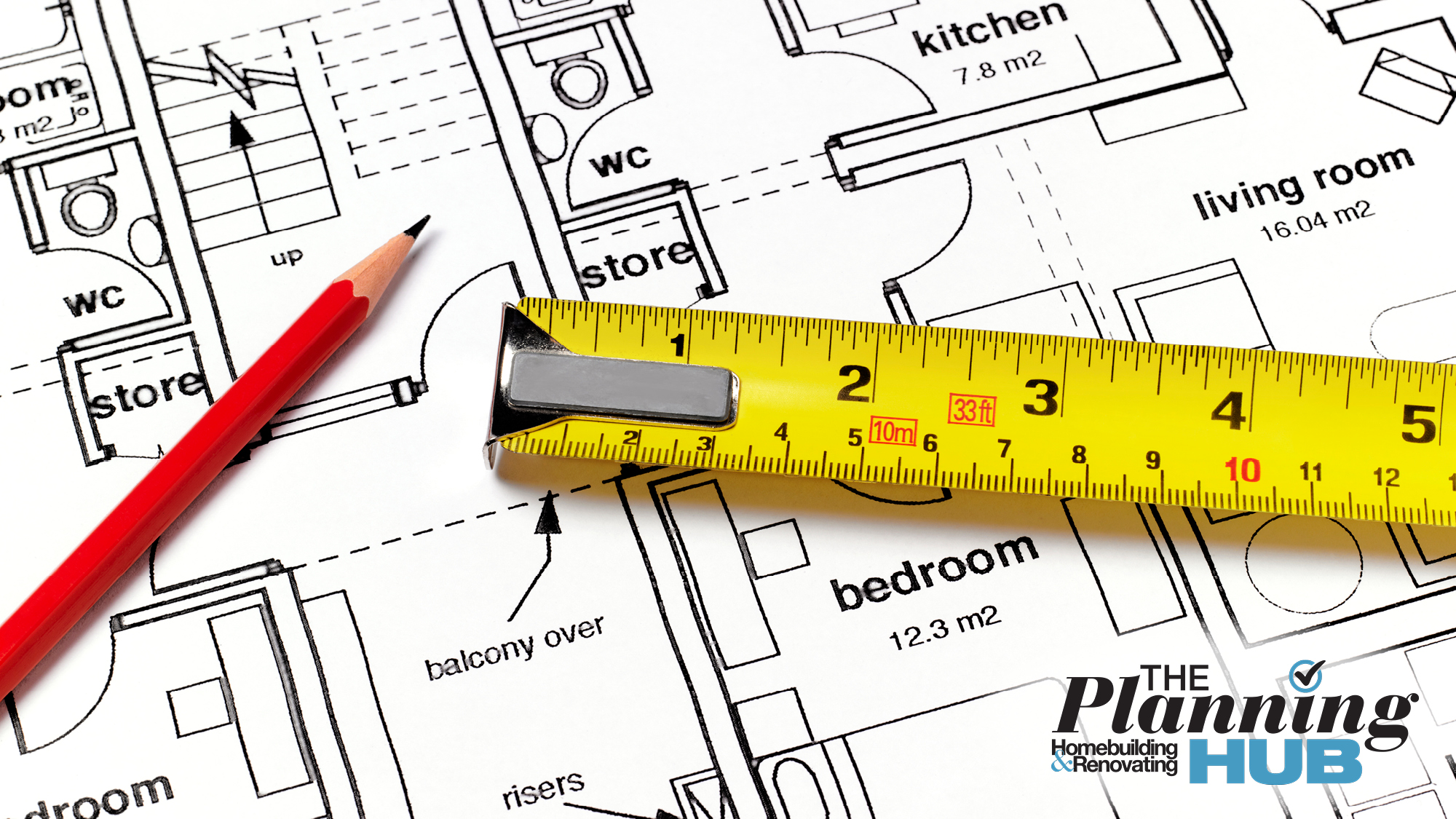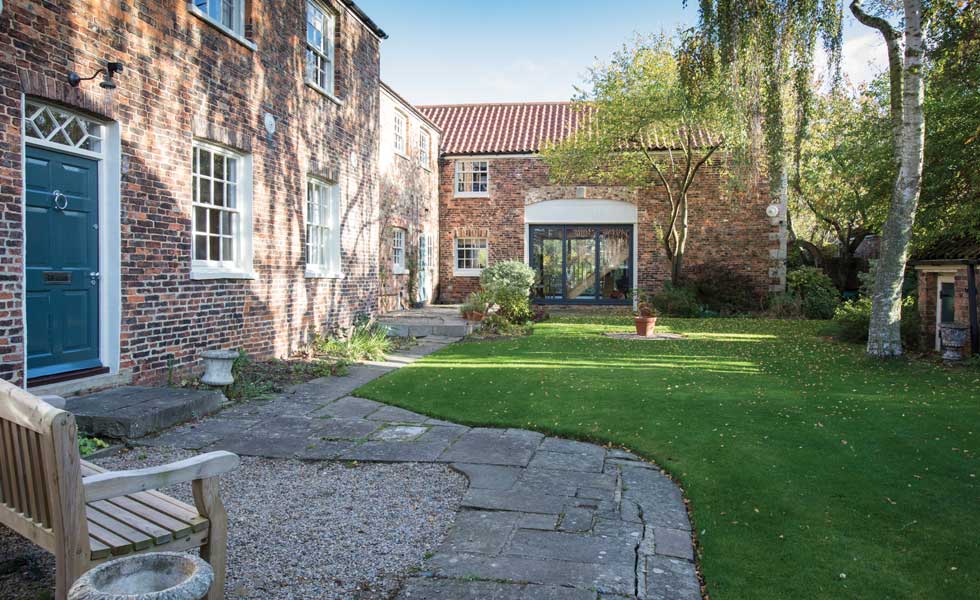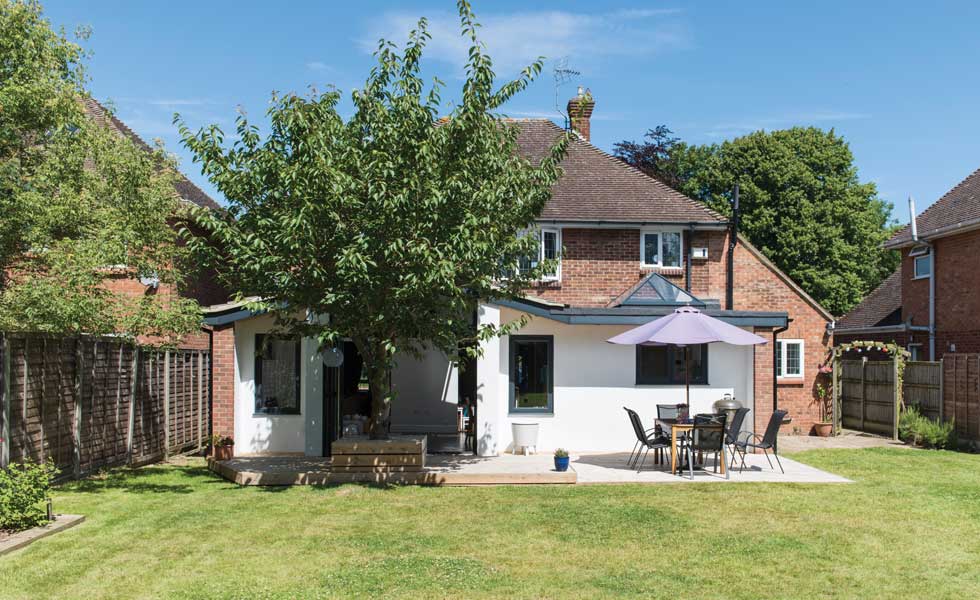Permitted Development: How it works for homeowners
Find out what you can build under Permitted Development without planning permission in our beginner's guide

What size extension can be built under Permitted Development (PD)? That's a question that many homeowners who want to extend or renovate want to know the answer to.
PD rights can help you avoid the need to apply for full planning permission if the size of your build meets the specific limits set out in the criteria.
Porches, small extensions and loft conversions could all fall under Permitted Development, however the criteria you have to meet is strict, so we've created this beginner's guide to give you some helpful insight about how PD works and the requirements your project will have to meet.
Latest Changes to Permitted Development

Need more advice or inspiration for your project? Get two free tickets to the Homebuilding & Renovating Show.
There have been several new PD rights in England in recent years, including a significant change for extenders, which saw the introduction made back in September 2020 of a fast-track for two-storey extensions on homes.
Another change took effect in August 2020 which makes it easier to turn commercial premises into homes. A new class MA (‘Mercantile to Abode’) now allows the conversion of any empty Class E commercial premises, such as offices, restaurants, shops and gyms into new homes without planning permission.
What is Permitted Development?
What Does Permitted Development Mean for a Homeowner?
The Government’s planning reforms propose relaxations to PD rights so it's worth keeping an eye on developments.
Permitted Development grants rights to enable homeowners to undertake certain types of work without the need to apply for planning permission. It means it's quite possible that building works like the addition of an extension or outbuilding, for example, might fall under the terms of Permitted Development.
This implied consent of Permitted Development is granted in the form of General Development Planning Orders (GDPOs) which apply separately to England, Wales, Scotland and Northern Ireland.
What You Can and Can't Do Under Permitted Development
What Can I Build Under Permitted Development?
The scope of your Permitted Development rights are varied and cover both internal and external works, but there are strict design criteria that need to be adhered to. If your project falls outside of the set criteria, then it is likely you will need to submit a planning application.
Some home improvements that you can make under Permitted Development include:
- Building a small rear extension within certain limitations — this includes both single storey extensions and double storey extensions
- Building a porch less than 3m2
- Changes of use, such as loft conversions, garage conversions and basement conversion
- Internal alterations, such as knocking down internal walls
- Installing microgeneration equipment such as solar panels (apart from wind turbines)
- Installing satellite dishes and erecting antenna
- Adding rooflights or dormer windows
(MORE: 23 Things You Can Do Without Planning Permission)
What Can't I Build Under Permitted Development?
Adding a box-like mansard type of loft conversion will more often than not exceed the size restrictions allowed under PD rights for loft conversions and would therefore need consent from the local authority.
If you plan on building a new house or creating a new dwelling by subdividing another property, for example, it is likely you will not be covered by your Permitted Development rights and you will need to make a planning application.
Similarly if you want to make changes to a listed building or property in a designated area, then it is probable that Permitted Development rights will be restricted. Always check with your local planning authority before starting to work.
There is a Limit as to How Many Changes You Can Make
All Permitted Development requirements apply to the dwelling as it was originally built, or as it stood on 1st July 1948 and as such, there is a limit to how many changes you can make to your home under PD. Unfortunately, the slate is not wiped clean when you buy a home — any space added by past owners since 1948 counts towards your Permitted Development allocation.

Do All Extensions Fall Under Permitted Development?
No. Many factors will deem whether an extension can be built under PD. The size of the proposed extension and its location, as well as the type of windows you plan on including, will all play a part in whether it's permissible under PD. Larger extensions are likely to require planning permission.
Our guide to building an extension explains the rules in more detail.
However, understanding PD rights can be really helpful if you make a planning application for something that is just a little larger than PD allows. This is because the council is duty-bound to compare what you want with what you can do anyway.
If PD would allow you a certain size of extension and what you want to build is a few meters higher or longer, remember that the council can only actually assess the impact of those additional elements. The fall back is your PD, and they cannot prevent that, so it’s only the additional amount that they can legitimately object to.
Are There any Restrictions with Permitted Development?

The Planning Hub is a new online resource that will help you understand how to get to grips with complex planning rules. Join today for access to easy-to-read guides which will provide you with key information to help you navigate the planning system.
If you live in a flat or maisonette then PD Rights do not apply due to the impact that any alterations could have on neighbouring properties.
If your house is located in a Designated Area, such as a National Park, Area of Outstanding Natural Beauty or Conservation Area then your Permitted Development rights may be restricted or removed under what is known as an Article 4 direction. This is where rights have been removed in the interest of maintaining the character of the local area. This could also be the case if your property is listed.
Alternatively, if you’re planning to self build a replacement dwelling and your proposed new home is bigger than the existing house on site, then your Permitted Development rights are likely to be restricted or even removed on condition of granting planning permission.
For more details on the rules see the Planning Portal.
Should I Check my Project Falls Under Permitted Development Rights with My Council?

Yes. Do double check with your local authority or get confirmation from a qualified surveyor that your proposed works are classed as Permitted Development before you begin.
If your project falls outside the scope of permitted development, you will need to apply for planning permission.
Prior Approval
What is Prior Approval and How Does it Form Part of Permitted Development?
In England, PD rights allow larger single storey rear extensions subject to a ‘Prior Approval’ process of up to 8m on a detached house and up to 6m on any other house. The local planning authority must be notified of the details prior to development taking place.
Details of the documents, drawings and fee (currently £96) to be submitted will be available on your local authority website.
The LPA will write to the immediate neighbours (see Neighbourhood Consultation Scheme, below) and give them at least 21 days to decide if they wish to object.
If there are no objections, then as long as an extension falls within the rules the LPA have to grant Prior Approval, the scheme can go ahead.
If there are objections the LPA will consider the impact of the proposal on the residential amenity of all adjacent neighbours and will either decide that the impact is acceptable and grant Prior Approval or take the view that the impact is not acceptable and refuse. There is a right of appeal against any refusal of a Prior Notification.
Visit the Planning Portal for more information on fees.
Prior notification can also be used to change the use of non-residential buildings to residential purposes. It can be used to change buildings from one commercial use to another, too.
Why Does the Neighbourhood Consultation Scheme Matter with PD?
If you intend to build a large single-storey rear extension of between 4m up to 8m (for a detached house) or between 3m and up to 6m on any other house*, you can now typically do so under Permitted Development (PD). But, you’ll likely need to go through the Neighbour Consultation Scheme, which is a prior approval process for large extensions.
You must notify your local authority of your intention to build a large extension and they will then notify your adjoining neighbours and consult them about your planned extension. If your neighbours raise concerns, your local authority will deem whether your plans can go ahead.
* There are caveats and criteria to meet so always check the Planning Portal.

Lawful Development Certificates
What is a Lawful Development Certificate And Do I Need One?
The tricky bit about Permitted Development is being 100% certain you’ve interpreted the rules correctly. The way to be certain is to apply for what’s called a Lawful Development Certificate.
You provide full details of what you intend to do, explaining how it complies with Permitted Development and submit this application to the council. It’s not a planning application, it’s a determination by them that what you want to do complies with the PD regulations. It takes about the same length of time as a planning application, but it’s not discretionary based on planning officers’ opinions or neighbour objections; it’s a legal determination that you’re doing something in accordance with the rules. It’s a good way of being certain and when it comes to selling your house you can prove that it was all legal.
The cost of an LDC for proposed use or development is half the normal planning fee.
It's important to note that a Lawful Development Certificate is not the same as planning permission.
Categories of PD Rights
How Big Can an Extension be Under Permitted Development Rights?
Householder PD rights fall into different categories depending on the work being planned. These are:
Class A – Extensions (enlargement, improvement or alteration)
This allows a householder to build a single-storey side extension up to half the width of the existing dwelling; a single-storey rear extension up to 4m in length for a detached dwelling and 3m long for a semi or a terrace house; and, in certain circumstances, 3m two-storey rear extensions.
The changes that took effect on 30 May 2019 now make permanent the decision that larger single-storey rear extensions of up to 8m (6m for semi or terrace) are permissible under Class A — but do require prior notification (see ‘Lawful Development Certificates are key’).
Class B – Additions to the roof
This allows for rear dormers and hip-to-gable extensions as long as the additional volume created does not exceed 50m3 (40m3 for semis and terraced homes).
This allows for an outbuilding to be erected within a residential curtilage as long as it is sited behind the principal (often the front) elevation, does not cover more than 50% of the curtilage and is not more than 3m in height (4m for a dual-pitched roof; 2.5m where within 2m of a boundary).
There are also specific regulations relating to Hard Surfaces (Class F), Chimneys & Flues (Class G) and Microwave antennas (Class H).
FAQs
Do I Still Need Building Regulations Approval for Work Classed as Permitted Development?
Yes. Building Regulations relate to the building work itself and not the permission to carry out the work, so your work must still comply with the stipulations of the Regs. It’s worth noting that if you need to submit a building notice or full plans application to your local authority building control, fees will also apply.
Can a Neighbour Object to Work I Carry Out Under PD?
While a neighbour can object to any proposed changes to your home, the LPA will only be concerned with any objections that relate to material matters. To help avoid objections, keep your neighbours informed of your plans and listen to their concerns. If you can alleviate their concerns with small tweaks that don’t compromise your overall design, it’s well worth doing.
If any of your proposed works involve a party wall, you may need a party wall agreement.

What Happens if I’ve Built Assuming Permitted Development Rights, But Actually Should Have Sought Planning Permission?
If, once an extension or outbuilding etc. is constructed, the LPA determines that the proposal does not comply with PD regulations then you may be faced with enforcement action, which would normally result in a request for a retrospective planning application.
Should permission be refused there is a real likelihood that any extensions or associated works would be required to be demolished. As such, confirmation in the form of the Lawful Development Certificate is highly recommended.
Bring your dream home to life with expert advice, how to guides and design inspiration. Sign up for our newsletter and get two free tickets to a Homebuilding & Renovating Show near you.
Michael is Homebuilding & Renovating's Director of Content, Vice Chair of the self build industry body, the National Custom and Self Build Association (NaCSBA), presenter of multiple property TV shows and author of Renovating for Profit (Ebury). He also runs an architectural and interior design practice, offering design and project management services. He is one of the country's leading property experts and has undertaken over 30 building projects including two self-builds and the renovation of a Grade-II listed farmhouse.
Michael has presented over 150 property shows for BBC, ITV1, Channel 5, UK TV Style, and Discovery RealTime, including I Own Britain's Best Home; Don't Move Improve; Trading Up; Good Bid, Good Buy; Build, Buy or Restore?; How to Build A House; and Hard Sell.
Michael is also a regular expert at the Homebuilding & Renovating Shows. He has written for leading British newspapers, including The Daily Telegraph, Sunday Times, Daily Express and The Independent and has appeared on news programmes such as BBC Breakfast.

